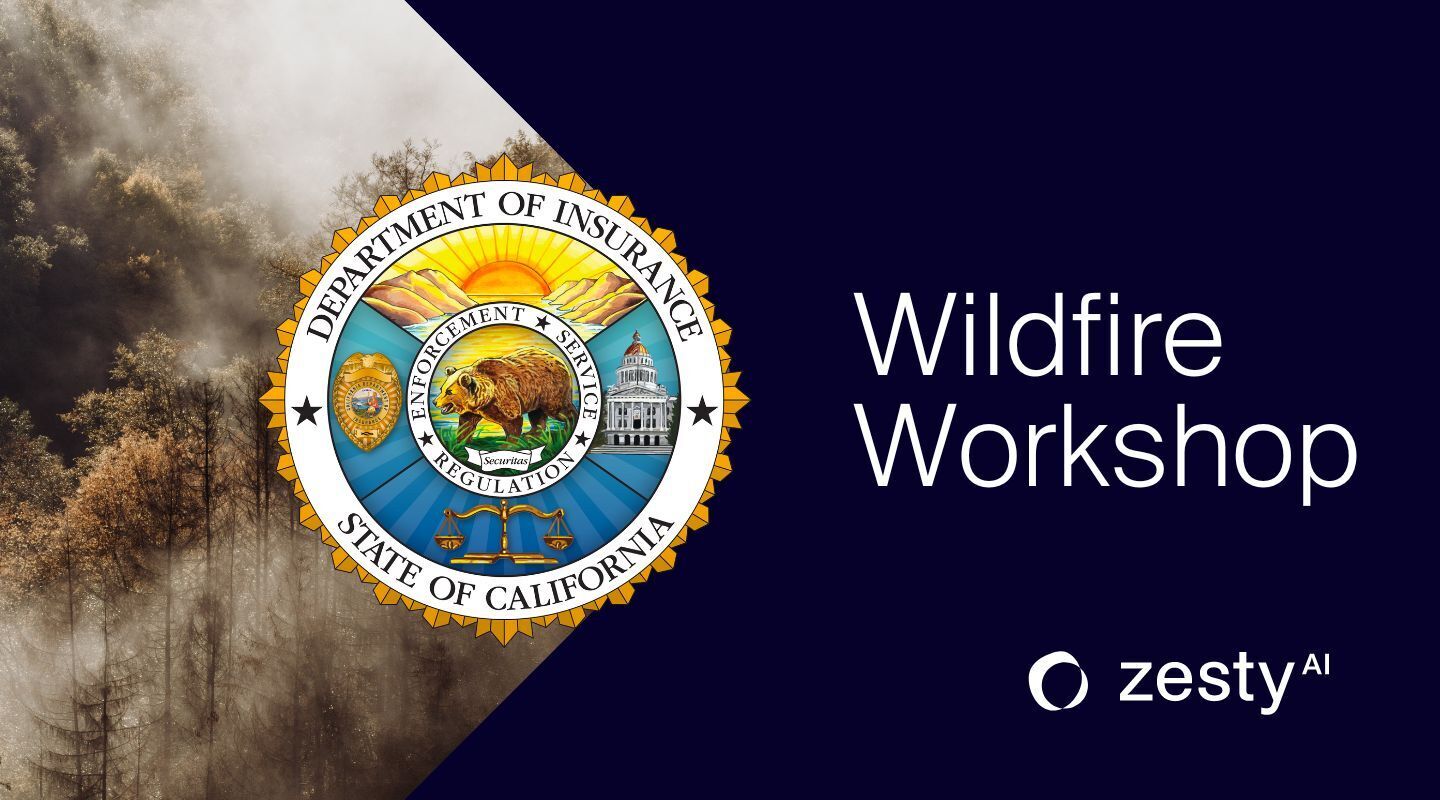ZestyAI Calls for Transparency in Risk Modeling at CDI Wildfire Workshop
Z-FIRE, ZestyAI’s wildfire risk model was developed with transparency in mind, giving insurance carriers the information they need to share information about a property’s wildfire risk with their customers.


The following is a summary of the testimony given by Bryan Rehor, Director of Regulatory Strategy, ZestyAI, at the CDI wildfire workshop.
ZestyAI’s Vision
ZestyAI's vision is to predict and mitigate the impact of natural disasters on society by harnessing cutting-edge technology, such as Artificial Intelligence. Our Z-FIRE product is a new-age, predictive wildfire risk model built on decades of real loss data, not simulations.
Approval of Z-FIRE to Empower Insurers
In 2020, Z-FIRE was extensively reviewed as part of an approved rate filing by the California Department of Insurance, and it has been leveraged in additional rate filings ever since. We developed this product to enable insurance carriers to make informed decisions about property risk, while at the same time providing transparency to homeowners, allowing them to understand their property's risk factors and take appropriate action to lower their risk. In the same way, we believe models provide valuable information to help insurers establish appropriate rate levels.
We developed this product to enable insurance carriers to make informed decisions about property risk, while at the same time providing transparency to homeowners.
The Imperative of Transparency
We strongly believe transparency is crucial for a healthy insurance market because it fosters public confidence, trust, compliance, and accountability. When sharing information about models with the CDI, ZestyAI believes two guiding principles should be followed:
- The provided information should be sufficient to enable public participation in the rate-making process to capture the benefits just mentioned.
- Any information that is not relevant to validating model compliance, or that creates the ability for another party to replicate the model, should not be made public.
Sometimes, in order to complete a thorough model review, sensitive information is required. Typically, modelers are hesitant to subject this information to the public. Therefore, we’re advocating for the industry and the CDI to seek alternatives that strike a balance between a thorough review process and fostering a competitive market to enable innovation.
Recommendations for Model Transparency
With these principles in mind, we recommend certain elements that should be made public to enable an independent review of a model.
- First, insurance carriers should provide details about how the model was built and validated, including its assumptions, inputs, and general operation. This information is vital for building trust, holding modelers accountable, and enabling an independent review by the CDI or other interested parties.
- Additionally, modelers should offer auditable solutions that can be verified against real loss data over time. For example, a wildfire model should be continuously validated on new wildfire events in order to ensure it maintains credibility for rate-making.
Other aspects, such as the raw training and loss data and the explicit computer program developed, are not necessary to create transparency. In cases where doubts arise, a third-party actuarial review of the loss data and a technical review of the model by experts can be conducted outside of public scrutiny.
ZestyAI's Approach: A Focus on Actual Loss Data
After years of research and development, our own modelers have opted for a model architecture that does not rely on simulations, but rather on actual loss data. Historically, it was challenging for modelers to gain access to the amount of wildfire loss data that was necessary to create a reliable model. With the onset of computer vision enabled by AI and the ubiquitous availability of high-resolution satellite and aerial imagery, we have arrived at a new generation of models that are trained on large amounts of actual losses. We at ZestyAI believe that loss-based models offer greater transparency because they use wildfires that have already occurred to predict the probability of a home being damaged in a future wildfire, which means they can be validated when new wildfires occur.
We at ZestyAI believe that loss-based models offer greater transparency because they use wildfires that have already occurred to predict the probability of a home being damaged in a future wildfire...
The Power of Models Driven by Real Data
By combining models based on actual loss data with coverage information provided by carriers, the industry can offer insurers a robust Average Annual Loss that serves as a valuable input for developing rate indication templates. ZestyAI’s Z-FIRE model has already been made available to the public, accompanied by an updated model checklist. Additionally, the latest out-of-sample reports demonstrate the model's ability to track and align with real-world observations. We believe that this level of scrutiny should be applied to all models, regardless of use case, without exception.
The Path Forward: Embracing Technology and Collaboration
By utilizing models driven by real loss data, the industry can empower both the public and the CDI to gain a comprehensive understanding of insurance rates and the underlying risk factors. We believe that a full model review process that allows sensitive information to be reviewed appropriately can foster a resilient insurance market in California, where homeowners have access to transparent and informed rate assessments. By clearly outlining the expectations of a proper model review, the CDI can also facilitate an expedited review process, which is a cornerstone of a healthy insurance market. And, by embracing the technology that is now available to us, we can all benefit from accurate rate indications with transparent models that are able to be validated against real scenarios.
Concluding Thoughts: California's Insurance Landscape
While we all share substantial challenges in California, we must embrace comprehensive disclosure, ongoing validation, and a shared commitment to managing wildfire risks effectively. Together, we can shape a future where insurance rates are just, inclusive, and reflective of the actual risk that California home and business owners face.
Want industry-leading wildfire risk insights?









